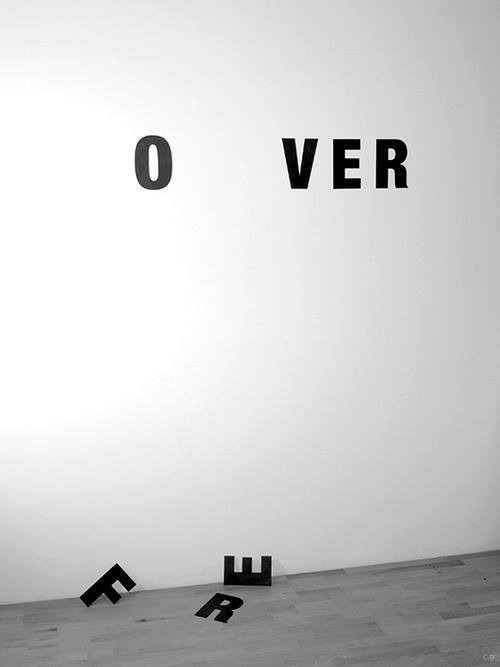“I miss you,” says the woman. “I think we missed our floor,” the man responds. They both speak in frustrated tones. Blinking on the tops of their closed eyelids is a projected video recording of their open eyes. Although their audience comes and goes, they remain — standing in their restricted space, close enough to touch, yet as far apart as two people can be.
An elevator may be the last place one would expect to find art, but this is the setting in which University of Michigan MFA student, Ann Bartges, has chosen to stage her piece, Remote Connection: Performance for Elevator. She and her husband, Jesse Potts, are the performers. They face each other, both wearing a projection instrument on their heads and repeating their script, which is composed of extracts from their long-distance relationship, for three hours as they are carried from floor to floor.
“Distance has invited technology into my closest relationships,” Bartges begins when explaining her inspiration in creating this piece. “From my home in Ann Arbor, I live my friendships and marriage from my computer, relying on video chat, email, and social media to keep these loved ones present in my life,” she says, “Through my artwork, I examine the human presence of mediated connection.”
This human presence may be difficult for a viewer to understand at first glance. After all, it is more than a little shocking when one’s expectations of an uneventful elevator ride are interrupted by two people with machines attached to their heads. But after some time observing the performance, it becomes clear that they are still people, no matter what projected masks haunt their faces. When one listens to their words and the often exasperated tones by which they are spoken and sees the revelatory pained muscle ticks which accompany them, s/he is able to understand the significance of this work.
“Because the piece takes place in an elevator, there are times when we have an audience and times when we do not,” she says. “We continue the performance regardless. I can’t see people when they enter or leave, but I can hear them and because the space of the elevator is so small, I can feel the body heat of a larger crowd. However, I cannot perceive their interest or response. Whether or not we have an audience, I try to maintain my focus on the potential for a connection with Jesse.” They are connecting through their shared frustration — both holding the desire to communicate intimately, regardless of the distance between them. It is a beautifully created, yet disturbing depiction of the trials that any relationship faces when challenged by distance and the inadequacy of technological communication.
“I am very interested in the significance of a fleeting moment,” Bartges says, “lasting perhaps seconds, but living on in memory for years. Live performance suits that fascination, itself an event that the viewer only has physical access to in the present moments of the piece.” She echos this idea in her work, because although three hours may seem like forever for the performers; for them and primarily for the viewers, the experience is very much temporary. It is a fleeting moment in life — it may reflect a reality, people my gawk, their projected masks may illuminate deeper truths, but after these hours, months, years, etc., it will come to an end. They will exit the elevator and reenter their lives. Eventually, instead of traveling up and down, trapped in the limbo of time and distance, they will power off their head apparatuses and travel forward.

Ann Bartges (right) and her husband, Jesse Potts, perform Remote Connection: Performance for Elevator. Photo credit: Juliet Hinely.






